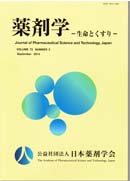Volume 66, Issue 2
Displaying 1-18 of 18 articles from this issue
- |<
- <
- 1
- >
- >|
Foreword
-
2006Volume 66Issue 2 Pages 83
Published: 2006
Released on J-STAGE: April 13, 2019
Download PDF (143K)
20th Anniversary Commemorative Articles: Toward the Establishment of Corporate Jurid
-
2006Volume 66Issue 2 Pages 84-89
Published: 2006
Released on J-STAGE: April 13, 2019
Download PDF (364K) -
2006Volume 66Issue 2 Pages 90-93
Published: 2006
Released on J-STAGE: April 13, 2019
Download PDF (485K) -
2006Volume 66Issue 2 Pages 94-101
Published: 2006
Released on J-STAGE: April 13, 2019
Download PDF (1007K) -
2006Volume 66Issue 2 Pages 102-105
Published: 2006
Released on J-STAGE: April 13, 2019
Download PDF (867K) -
2006Volume 66Issue 2 Pages 106-109
Published: 2006
Released on J-STAGE: April 13, 2019
Download PDF (332K) -
2006Volume 66Issue 2 Pages 110-114
Published: 2006
Released on J-STAGE: April 13, 2019
Download PDF (453K) -
2006Volume 66Issue 2 Pages 115-120
Published: 2006
Released on J-STAGE: April 13, 2019
Download PDF (639K)
Colloquium
-
2006Volume 66Issue 2 Pages 121-124
Published: 2006
Released on J-STAGE: April 13, 2019
Download PDF (501K)
Research Laboratory
-
2006Volume 66Issue 2 Pages 125-129
Published: 2006
Released on J-STAGE: April 13, 2019
Download PDF (994K)
Young Researchers
-
2006Volume 66Issue 2 Pages 130-134
Published: 2006
Released on J-STAGE: April 13, 2019
Download PDF (595K) -
2006Volume 66Issue 2 Pages 135-138
Published: 2006
Released on J-STAGE: April 13, 2019
Download PDF (418K)
Current Topic
-
2006Volume 66Issue 2 Pages 139-142
Published: 2006
Released on J-STAGE: April 13, 2019
Download PDF (804K)
Introduction
-
2006Volume 66Issue 2 Pages 143-147
Published: 2006
Released on J-STAGE: April 13, 2019
Download PDF (530K)
Report
-
2006Volume 66Issue 2 Pages 148-150
Published: 2006
Released on J-STAGE: April 13, 2019
Download PDF (720K)
Regular Articles
-
2006Volume 66Issue 2 Pages 151-159
Published: 2006
Released on J-STAGE: April 13, 2019
Download PDF (977K) -
2006Volume 66Issue 2 Pages 160-166
Published: 2006
Released on J-STAGE: April 13, 2019
Download PDF (629K)
News
-
2006Volume 66Issue 2 Pages 167-175
Published: 2006
Released on J-STAGE: April 13, 2019
Download PDF (1632K)
- |<
- <
- 1
- >
- >|
